# 插入數據庫
先引入Db類
~~~
use think\Db;
~~~
## 語法:
## Db::table('表名')->insert();
```
$data=['user_name'=>'zhangxueyou','password'=>'123456'];
數據庫字段名=>字段值
```
## insert()方法返回值為影響幾行
insert方法添加數據成功返回添加成功的條數,insert正常情況返回1
## 返回值:
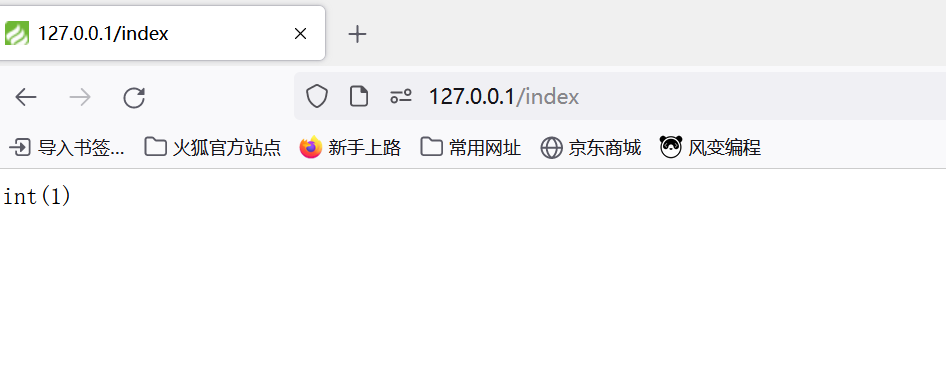
## 語法截圖:
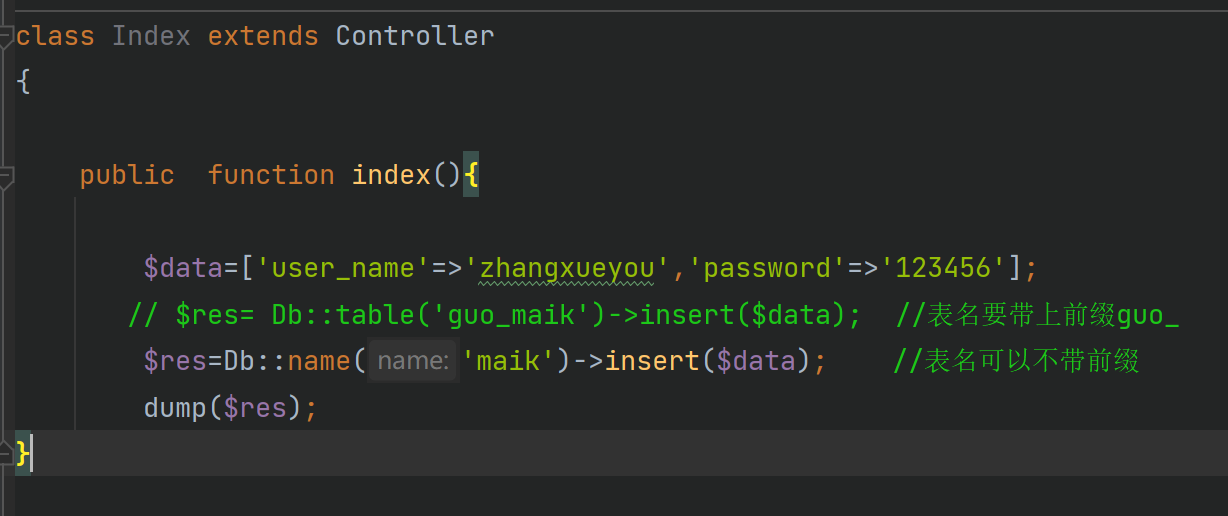
## 語法:
~~~
<?php
namespace app\index\controller;
use think\Controller;
use think\Db;
class Index extends Controller
{
public function index(){
$data=['user_name'=>'zhangxueyou','password'=>'123456'];
// $res= Db::table('guo_maik')->insert($data); //表名要帶上前綴guo_
$res=Db::name('maik')->insert($data); //表名可以不帶前綴
dump($res);
}
}
~~~
# 獲取自增ID插入后
##
語法:
## $id=Db::name('user')->getLastlnslD();
## 返回值:獲取當前自增的ID值 (插入值的ID)
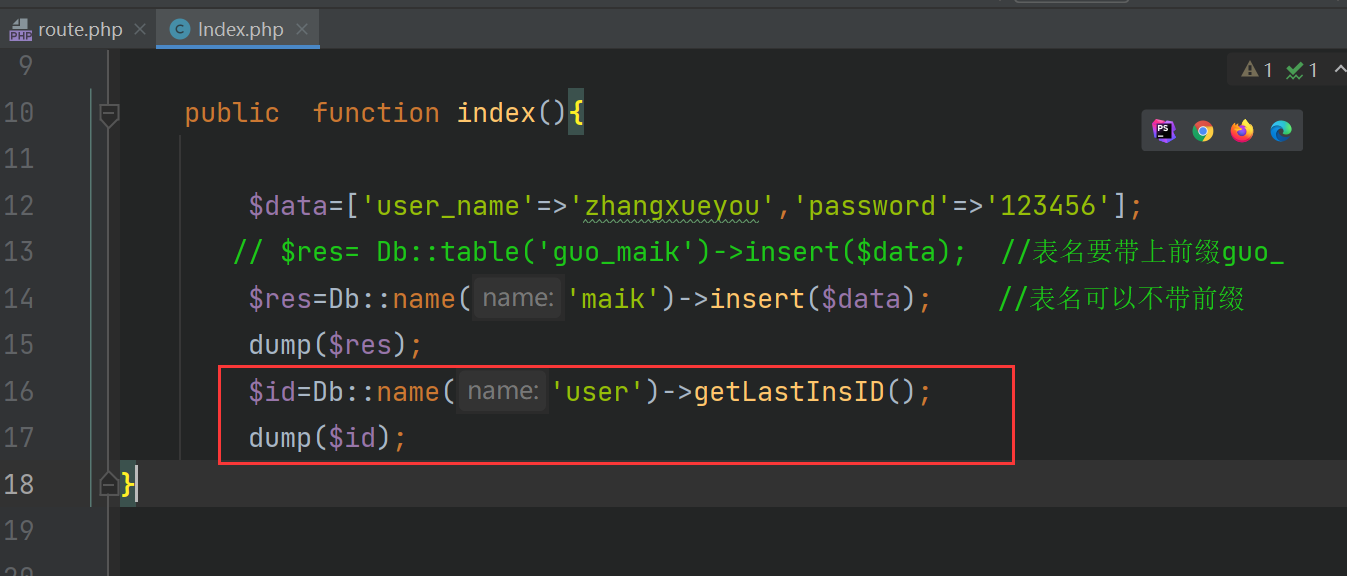
## 代碼案例:
~~~
<?php
namespace app\index\controller;
use think\Controller;
use think\Db;
class Index extends Controller
{
public function index(){
$data=['user_name'=>'zhangxueyou','password'=>'123456'];
// $res= Db::table('guo_maik')->insert($data); //表名要帶上前綴guo_
$res=Db::name('maik')->insert($data); //表名可以不帶前綴
dump($res);
$id=Db::name('user')->getLastInsID();
dump($id);
}
}
~~~
# 插入多條數據
Db::name('maik')->insertAll($data); 把單條中insert()方法換成insertAll()方法就可以實現多條數據插入
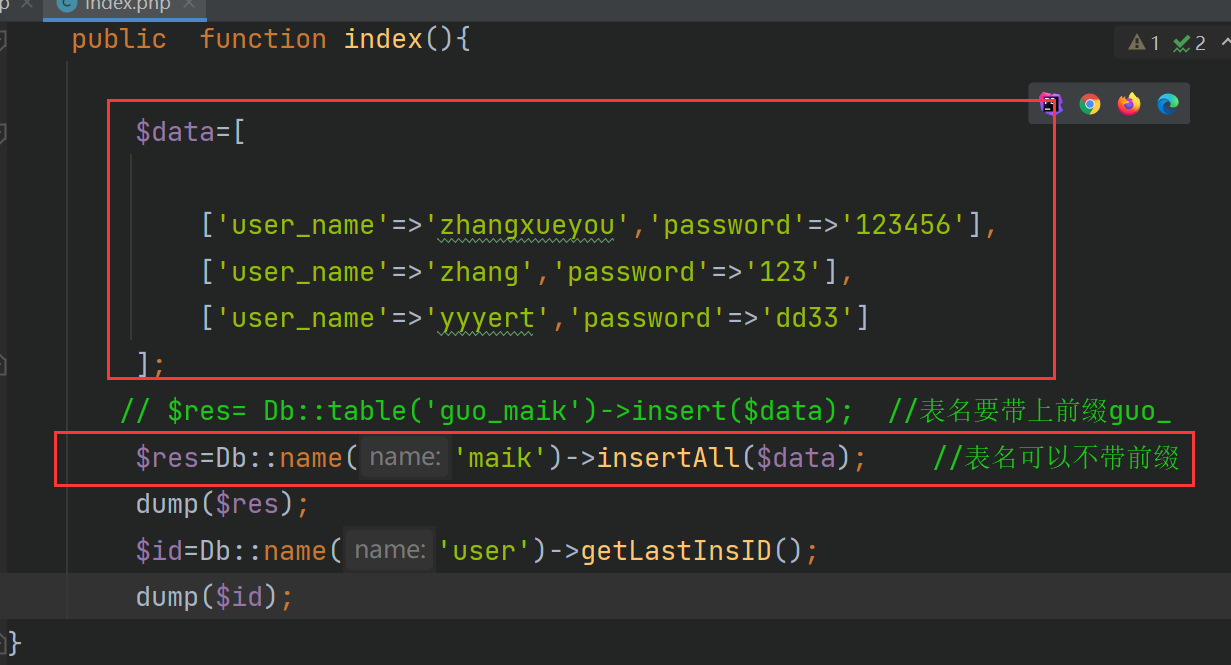
## $data寫成二維數組的方式

## 代碼案例:
~~~
<?php
namespace app\index\controller;
use think\Controller;
use think\Db;
class Index extends Controller
{
public function index(){
$data=[
['user_name'=>'zhangxueyou','password'=>'123456'],
['user_name'=>'zhang','password'=>'123'],
['user_name'=>'yyyert','password'=>'dd33']
];
// $res= Db::table('guo_maik')->insert($data); //表名要帶上前綴guo_
$res=Db::name('maik')->insertAll($data); //表名可以不帶前綴
dump($res);
$id=Db::name('user')->getLastInsID();
dump($id);
}
}
~~~
數據庫值
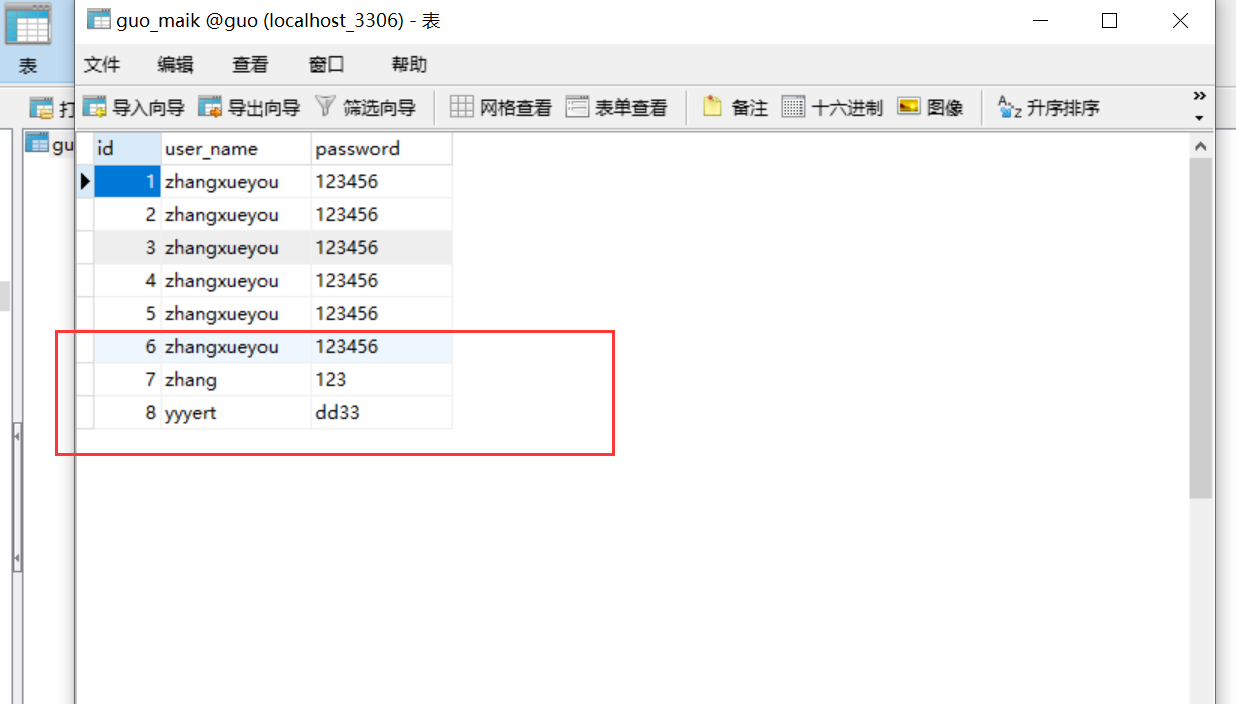
# 獲取插入的ID方法
Db::table('guo_maik')->insert($data,'',true); 的情況下返回的則是這條數據的ID
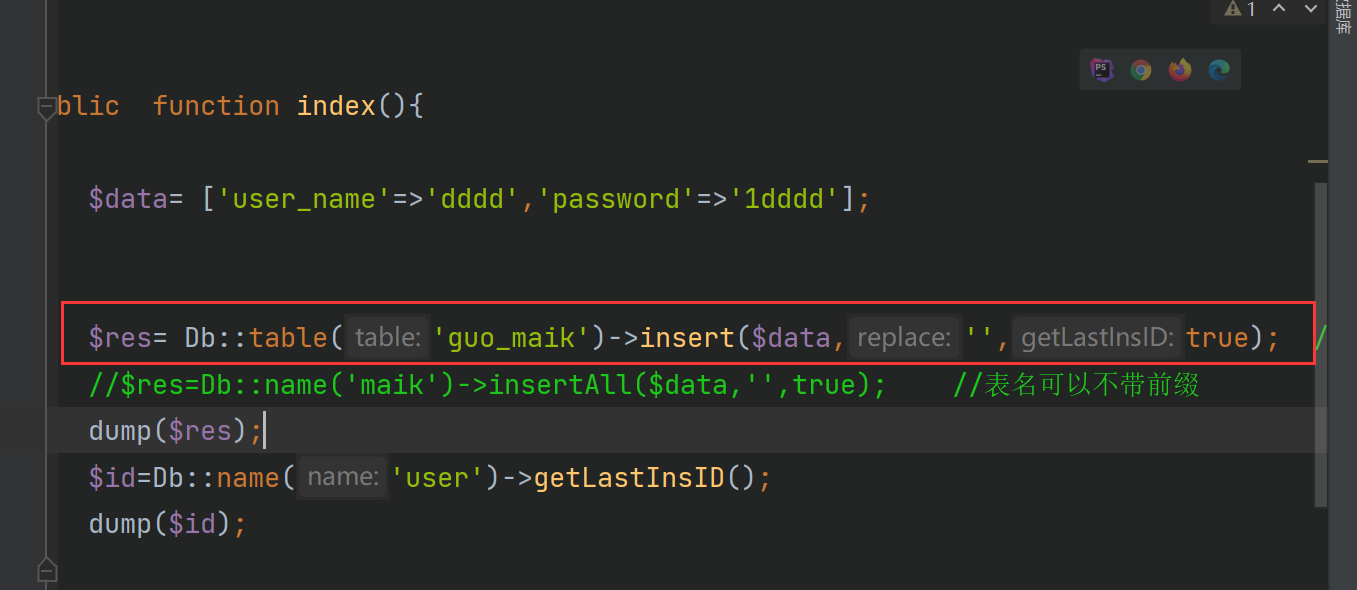
- 文件作用與框架文件說明
- 助手函數
- 系統常量(常用與自定義)
- 自定義配置文件extra(文件夾)
- 自定義配置文件.Env
- 路由pathinof 方式
- 路由強制模式(主要用這個)
- 路由的請求方法幾種常用
- 路由參數規則設置
- 路由分組閉包與MISS路由
- 資源路由
- 請求Request和參數過濾
- session和cookie的配置及獲取
- 判斷路由請求類型及Request注冊方法
- 響應數據方法create
- json xml jsonp助手函數
- 改命名空間(改成自定義的)
- (controller里常用的方法)success與error重定向的使用nignx重寫的配置
- _initialize構造函數
- beforeAction前置操作使用
- 空路由與多級控制器使用
- 連接數據庫操作(ORM)
- 助手函數db()
- 插入數據庫操作(ORM)
- 查詢數據庫操作(ORM)
- (鏈式語法)where條件查詢數據庫(ORM)
- (鏈式語法)只查詢某個字段或者排除某個字段鏈式操作field(ORM)
- (鏈式語法)排序查詢order(ORM)
- (鏈式語法)查詢條數limit(ORM)
- (鏈式語法)查詢多條重復數據只返回一個distinct方法查詢(ORM)
- (鏈式語法)獲取mysql語句fetchSql(ORM)
- (鏈式語法)查詢改表名輸出alias(ORM)
- 連表查詢join() (ORM)
- 數據庫事務監聽(ORM)
- (改數據)更新數據庫(ORM)
- (改數據)更新數據庫之自增與自減(ORM)
- 鏈式操作語法(ORM)
- (刪除數據)刪除數據(ORM)
- model模型創建方法
- (增)插入數據(Model)
- (查)查詢數據(Model)
- 關于類 (雜項整理)
- (查)動態查詢數據(Model)
- (改)更新數據庫(Model)
- (刪)刪除數據(Model)
- 數據表時間戳(Model)
- view視圖創建與渲染模板
- view視圖輸出與調用
- view輸出常量與Session 與Cookie值
- view輸出函數以及過濾
- view視圖循環輸出與if判斷
- view各項配置以及修改(自定義資源路徑)
- view各項配置以及修改(修改模板起始符)
- view 模板引入和自定義配置
- view模板繼承
- thinkphp 實戰命令行生成模塊控制器模型視圖
- Validate登錄驗證使用方法
- Validate驗證場景分離寫法
- Validate令牌驗證
- captcha驗證碼配置
- 圖片以及文件上傳
- 資源路由下URL語法拼接模板循環的ID
- view三元運算符
- POST下的PUT請求(安全方法)
- 路由重定向
- 常見問題解決
- config文件
- 模板里使用路由路徑
- 原生PHP在thinkphp中拓展
- 公共函數文件
- 5.1與5.0區別
- 5.1路由區別
- 5.1中間件
- 5.1微信支付
